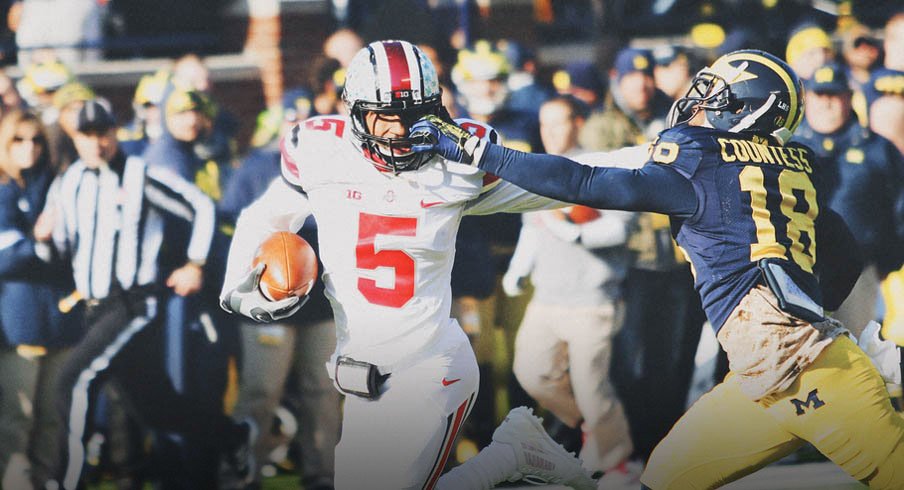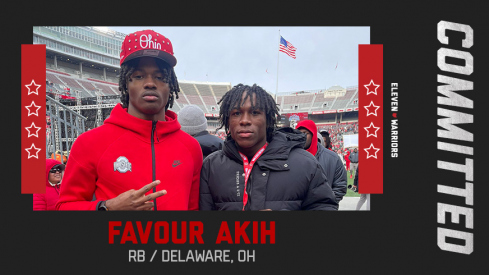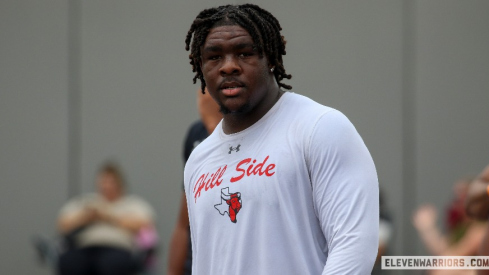For all its accomplishments, Urban Meyer's run offense consists of just a few plays. Inside zone, power, and counter trey comprise the vast majority of run calls. But therein lies Meyer and his offense's success.
Using a minimum of base concepts provides the offense countless practice reps. Offensive coordinator Tom Herman has stated that opposing defenses know that the Buckeyes will run inside zone or power in short yardage. But the Ohio State offense runs the play so many times that Meyer and Herman like their chances.
And by limiting themselves to a few core concepts, Meyer's staff can deploy minor formation variations and adjustments to confuse defenses. To do so Meyer simply tags subtle changes to the backfield and wide receiver responsibilities. Everything remains the same for the offensive line and other skill position players. So it largely the same play, reducing the need for additional practice time, an asset in short supply in college football.
But the adjustment looks different to the defense and forces the opponent to adjust its responsibilities.
Case Study: Power Read
James Light's insightful analysis of Ohio State's power read game against Michigan last year provides an illustrative example of this principle in action.
As the name implies, power read deploys power blocking. So the play itself is a variation of the power play, another Buckeye staple.
The offensive line still deploys the power blocking concept. The only difference with power read is rather than kicking out the defensive end, the quarterback will read the end and determine whether to give the jet sweep or keep and follow the pulling guard in the C gap.
Against the Wolverines, Meyer made further subtle adjustments to power read to counter how Michigan was defending the play. The Buckeyes' "H" slot receiver motioned in the backfield, creating a split back look.
In so doing, the defense cannot assume the run play will go away from the halfback. This limits the defense's ability set itself pre-snap, specifically by using pre-called scrape exchanges. And it provides an additional blocker at the point of attack. (H/T: James Light).

Game vs. Game
In response to the motion, Michigan began slanting their front side defensive line towards the jet sweep. Meyer and Herman simply altered Braxton Miller's launch point. Miller aimed for the front side B gap or inside the 3-technique. The front side guard and tackle took the defensive tackle where he wanted to go, allowing Miller to cut back inside.

This inside-path had a corollary benefit. As Light demonstrates, Michigan's backside safety would mirror the H-back's motion and jet sweep action to provide an additional play side defender. This created an assignment conflict for the safety, because he was Michigan's backside force support.
In theory, this concern should have been mitigated because power read only attacks the front side edge. So the thought is to get an additional defender across the center-line.
But when you have an athlete like Braxton Miller he can quickly attack the whole field. And Miller took advantage of this opening, using the inside angle to cut back across the grain to the open space, right where Michigan lacked force support.
In the clip below, you will see Michigan's safety come into the picture with the H-back motion and then follow the jet sweep action, opening the cutback.

In sum, the split back variation created a conflict of responsibilities for the backside safety, leading to several explosive plays.
Such subtle variations are possible precisely because Ohio State limits their run concepts. The coaches and players understand the play so well that they can judge how a defense is playing the concept and adapt. These alterations can often more effectively constrain a defense then a different play. This is why offensive coaches such as Meyer increasingly recognize that less is more.


